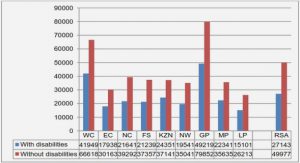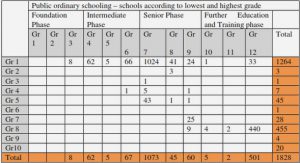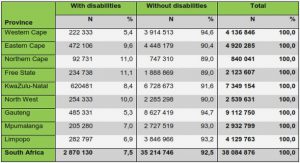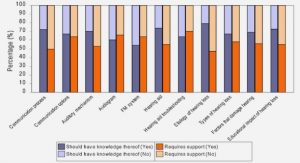Get Complete Project Material File(s) Now! »
Chemical reactivity: hydroxylation and deamination
Coq6 is an FAD dependent monooxygenase responsible for the hydroxylation of C5 of ubiquinone biosynthesis intermediates, as determined through electrochemical analysis of redox active lipids in
yeast cells expressing inactive Coq6 point mutants.20 Coq6 and its eukaryotic and prokaryotic homologs are primarily known to hydroxylate Q biosynthesis intermediates that are hydroxylated at position C4, such as 4-hydroxyphenol. However, recent experiments of our research group demonstrate that S. cerevisiae Coq6 is also capable of processing C4 aminated substrates, effectively deaminating substrates at C4 if necessary and performing a C4 hydroxylation in addition to the nominal C5 hydroxylation.44 This was principally observed through the S. cerevisiae ability to synthesize Q using 4-aminophenol as the source of Q’s aromatic head. The deamination activity seems to be related to the last 11 residues of the rotein, since truncation of this region abolishes C4 deamination but preserves C5 hydroxylation.44 When C5 hydroxylation is abolished, either through genetic knockout or inactivating mutation, the resulting non-respiring phenotype can be rescued by the addition of vanillic acid or 3,4-dihydroxbenzoic acid (shown in Figure 1.9) both of which furnish an aromatic center already hydroxylated at C5.20
PHBH: Holotype of Class A flavoprotein monooxygenases
A preliminary structural description of Coq6 can be developed through the analysis of a structurally similar enzyme, PHBH, which will introduce the general structure-function features of the global fold (defined as PHBH-like in SCOP, the Structural Classification Of Proteins50) likely to be conserved in Coq6. Our sequence-based search for proteins of known structure similar to Coq6 returns PHBH, (with 15% sequence identity to Coq6) which is also one of the most extensively characterized enzymes in biochemistry. The wild-type and many mutants have been studied by detailed in vitro activity assays under many variations of pH, substrate type, cofactor type, and cofactor reduction system.
The global fold of PHBH is interesting for its ability to execute two chemical reactions within a single active site in a single polypeptide chain, using conformational changes to combine an enzymatic cofactor (FAD), an FAD reductant (NADH in the case of PHBH), molecular oxygen, and the substrate in a coordinated sequence to produce a regioselectively hydroxylated product. We will briefly review the general anatomy of the global fold and the catalytic cycle of PHBH focusing on the specific structurefunction relationships (including FAD movements) likely to be relevant for our study of Coq6.
PHBH: Global fold and FAD
PHBH is composed of a single polypeptide chain whose global fold produces two distinct structural domains with two distinct functions (see Figure 1.10 Panels B, C, D). One domain is mainly composed of a large beta-sheet used to bind the substrate (para-hydroxybenzoate, pHB) as well as to close the active site and exclude bulk solvent, which is an important feature of catalysis. The other domain is mainly composed of a Rossmann-fold and is used to bind FAD in an extended conformation.
Monooxygenases: Existing computational studies
The wealth of experimentally solved structures of wild-type and mutant PHBH (and other flavoprotein monooxygenases) in complex with many substrate and cofactor variants have produced a large base of experimental atomic coordinates for computational studies. These indicate that an atomic resolution structure of the Coq6 enzyme can help us understand substrate binding and catalysis phenomena at a similar level of detail. Here we will briefly review five examples from the literature of the interplay between modeling and experiment in the characterization and rational design of FPMOs. First, we will see an example of the rational re-design of ligand binding in phenylacetone monooxygenase based on homology models of the enzyme.85 In the second example we will see molecular dynamics applied to the investigation of the proton transfer network in PHBH.88 The third example describes accessible volume calculations performed on the PHBH structure.89 The fourth example describes the combined use of homology modeling, molecular dynamics, and docking to test computed substrate affinity to experimental dissociation constants.91 Finally, we include an example of quantum mechanical modeling applied to the PHBH system to show the utility of atomic resolution protein structures. These examples serve to highlight three types of calculations important for the study of Coq6: computational redesign of ligand binding, molecular dynamics, accessible volumes, and substrate docking. These examples establish a precedent for the modeling strategy and techniques we will apply to Coq6.
Computational redesign of ligand binding based on homology models
PHBH is a type of flavoprotein monooxygenase (FPMO), an important class of enzymes in industrial chemistry, as they allow the stereoselective monooxygenation of substrates. These wild-type enzymes are excellent starting points for modification towards creating enzymes for processing industrial substrates through directed evolution or structure based rational design. Structural knowledge of these enzymes has been used to alter substrate specificity and product stereochemistry through rational designed mutations.
An example of this is the rational redesign of the thermostable phenylacetone monooxygenase (PAMO) by Pazmino et al.85 PAMO’s thermostability makes it a good candidate for an industrial biocatalysis enzyme, but it accepts only a small number of mainly aromatic substrates: phenylacetone, benzylacetone, alpha-methylphenylacetone, 4-hydroxyacetophenone, 2-dodecanone, bicyclohept-2-en- 6-one, and methyl-4-tolylsulfide.86 In order to expand the substrate scope treatable by this enzyme, particularly towards aliphatics, the authors turned to a homologous enzyme with greater substrate scope, cyclopentanone monooxygenase (CPMO), but lower stability. The authors identified key residues in the PAMO active site which were not conserved in CPMO, reasoning that these residues in CPMO are the molecular basis for accepting more diverse substrates. These positions in PAMO were mutated to their CPMO counterparts in various combinations and tested for activity, revealing a single point mutation which allowed the binding of a novel substrate.
A key feature of the PAMO work is that the identification of substrate binding residues was done through the comparison of an experimentally solved PAMO structure (determined by crystallography) and a computationally predicted CPMO structure (created by homology modeling). This is an example of the practical utility of an experimentally validated homology model in identifying substrate binding residues and designing mutations. A similar but more detailed strategy for modeling Coq6 enzyme-substrate interactions is developed in Chapter 2 (Computational strategy and methods).
Table of contents :
Table of Contents
Acknowledgements
Chapter 0 General introduction
1. General introduction
2. Modeling strategy
3. Document structure
Chapter 1 Introduction to ubiquinone biosynthesis
1. General introduction to ubiquinone and its role in cellular metabolism
1. What is ubiquinone?
2. Structure of ubiquinone
3. Functions of ubiquinone
1. A lipid soluble redox agent in the electron transport chain
2. An antioxidant for membrane lipids, proteins, and DNA
3. A structural membrane lipid
2. The ubiquinone biosynthesis pathway in S. cerevisiae
1. Overview
2. Individual Coq proteins
3. Known structures of Q biosynthesis proteins
4. Coq6: Existing experimental data
1. Coq6 amino acid sequence
2. Chemical reactivity: hydroxylation and deamination
3. Protein-protein interactions
4. Clinical relevance of Coq6
3. Structures of Q biosynthesis monooxygenases
1. Introduction
2. PHBH: Holotype of Class A flavoprotein monooxygenases
1. PHBH: Global fold and FAD
2. PHBH: Catalytic cycle
3. Monooxygenases: Existing computational studies
1. Computational redesign of ligand binding based on homology models
2. Molecular dynamics studies
3. Accessible volume calculation
4. Substrate docking
5. QM/MM modeling
4. Discussion
1. Challenges of studying the Coq system and the value added of molecular modeling
1. Enzyme solubility
2. Substrate solubility
3. Enzyme redox systems
4. Enzyme interdependence
5. Conclusion: Questions addressed by the present work
Chapter 2 Computational strategy and methods
1. Introduction
2. Strategy and methods
1. From questions to techniques
2. From techniques to strategy
3. Overview of homology modeling
1. Template searching and alignment
1. The importance of finding good templates
2. Sequence search by partial pairwise methods: BLAST
3. Sequence search by complete-sequence methods: PSSMs
4. Hidden Markov model methods: Phyre2
5. Structure based searching: DALI
2. Sequence alignment
1. Pairwise alignment methods
2. Multiple sequence alignment methods
3. Progressive MSA: ClustalO
4. Iterative MSA: MAFFT-L-INS-I
3. Model building
1. MODELLER
2. I-TASSER and ROBETTA
4. Molecular dynamics
1. Molecular simulation
1. From the macroscopic to the microscopic
2. From particles of matter to systems in phase space
3. Algorithmic implementation of ensemble constraints
4. From cold crystals to warm bodies
2. Molecules: atomic structures and interatomic forces
1. Physics and functional representation: the potential energy function
2. Force-field selection: AMBER99-SB-ILDN
3. Molecular dynamics simulation code: GROMACS
4. Molecular dynamics protocols
5. Accessible volume calculation
1. Voronoi meshes: CAVER
6. Docking
1. Representing binding through docking simulations: AutoDock VINA
7. Computing resources
Chapter 3 Construction of Coq6 homology models and stability screening through molecular dynamics
1. Introduction
2. Template search
1. Sequence based search: Phyre2
2. Structure based search: DALI
3. Top templates: a structural review
1. 4K22
2. 4N9X
3. 2X3N
4. 1PBE
4. The Coq6 global fold can be divided into two regions for homology modeling:
N-terminus and C-terminus
5. Coq6 contains an additional subdomain not present in known structural homologs
6. A Coq6-family MSA helps define the insert sequence
3. Model building
1. Modeling strategy: construction of a combinatorial set of multiple template 94 models
1. Generation 1: 4K22 as the Coq6 N-terminal template; no FAD or Coq6-family insert
2. Generation 2: 2X3N as the Coq6 N-terminal template; no FAD or Coq6-family insert
2. Homology models including the insert are used to design constructs for in vivo testing
1. Generation 3: 2X3N as the Coq6 N-terminal template; with FAD and Coq6-family insert
2. Generation 3: Homology models from I-TASSER and ROBETTA
4. Molecular dynamics simulation of Generation 3 constructs
1. I-TASSER Coq6 model (2X3N based)
2. ROBETTA Coq6 model (1PBE based)
3. RATIONAL Coq6 model (2X3N, 4N9X, and 4K22 based)
4. Comparative regional RMSD summary plots
5. Conclusion
Chapter 4 Selection of Coq6 models through molecular dynamics and substrate docking
1. Introduction
2. Selection of Coq6 models by substrate docking
1. Receptor-ligand binding: induced fit vs. conformational selection
2. Receptor-ligand binding as approximated by ensemble docking
3. Preliminary study on substrate models and the Coq6 active site
4. Blind docking of 4-HP (polyprenyl length = 0)
5. Blind docking of 4-HP6 (polyprenyl length = 0)
6. Variations of tail length for computational and experimental approximations
7. Site directed docking of 4-HP with tail lengths of 1-6 isoprene units
8. Docking survey conclusion
3. Enzyme model analysis
1. Active site identification
2. Evolutionary residue conservation
3. Accessible volume calculation: CAVER
4. Molecular dynamics simulations: effective diameter of the tunnels and substrate
1. Substrate model selection
2. Tunnel diameter estimation
3. Atom selection
4. van der Waals radius corrections
5. re face tunnel 1
6. re face tunnel 2
7. si face tunnel 1
8. Conclusion: comparison of the 3 tunnel types
5. Substrate access channel characterization
1. Round 1 of docking: Channel traversability screening
1. Substrate docking into the I-TASSER Coq6 model
2. Substrate docking into the ROBETTA Coq6 model
3. Substrate docking into the RATIONAL Coq6 model
4. Conclusion of Round 1 of substrate docking
2. Round 2 of docking: the RATIONAL model and an active site geometry descriptor
6. Conclusion
Chapter 5 Testing the hypothesis of a Coq6 substrate access channel
1. Introduction
2. Review of known Coq6 mutants
1. The H. sapiens clinical mutation Coq6 G255R mutation corresponds to S. cerevisiae Coq6 G248R
3. MD and substrate docking of the G248R mutant
4. Rational design of novel mutants blocking the substrate access channel
1. MD and substrate docking of the L382E mutant
2. MD and substrate docking of the G248R-L382E double mutant
5. Experimental results
1. In vivo activity assays for Coq6 WT, G248R, L382E, and G248R-L382E
6. Conclusion
Chapter 6 Research perspectives
1. Conclusion of the current work
2. Research perspectives
1. Molecular dynamics with substrate
2. Protein-protein interactions: binary pairs and protein complex architectures
3. Protein-membrane interactions
4. A phylogenetic study of the evolution of the Coq6-family insert
5. Modeling of C-terminal truncation mutants: a role in the deamination of
3-hexaprenyl-4-aminobenzoate?
6. Molecular dynamics over longer timescales
7. Substrate-enzyme assignment through systematic molecular modeling




